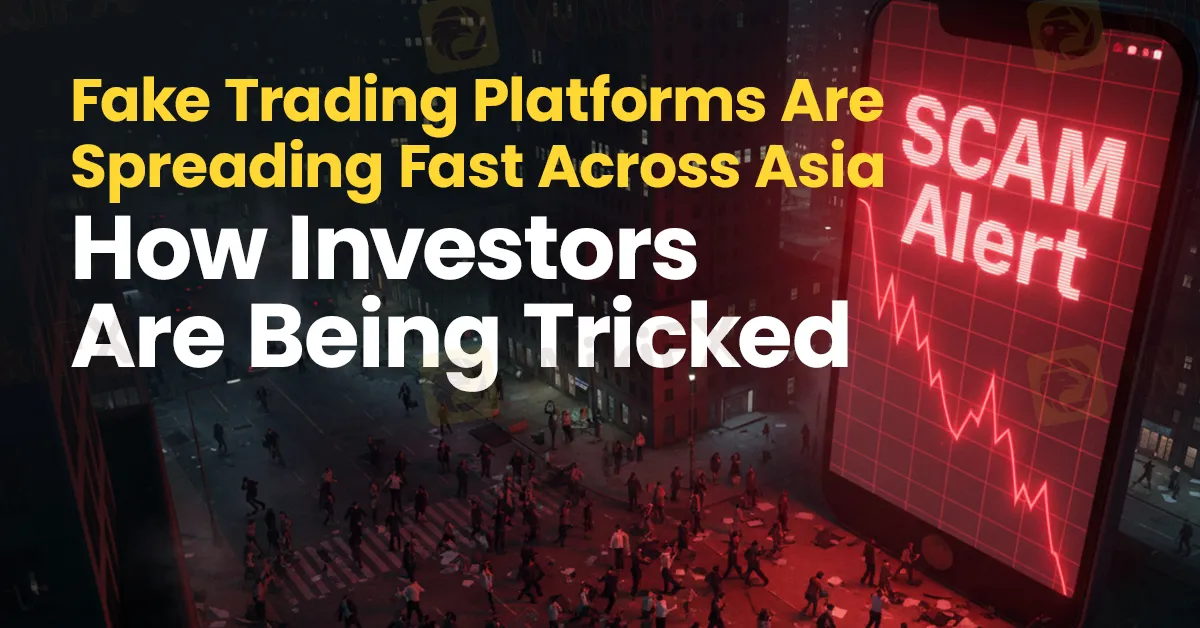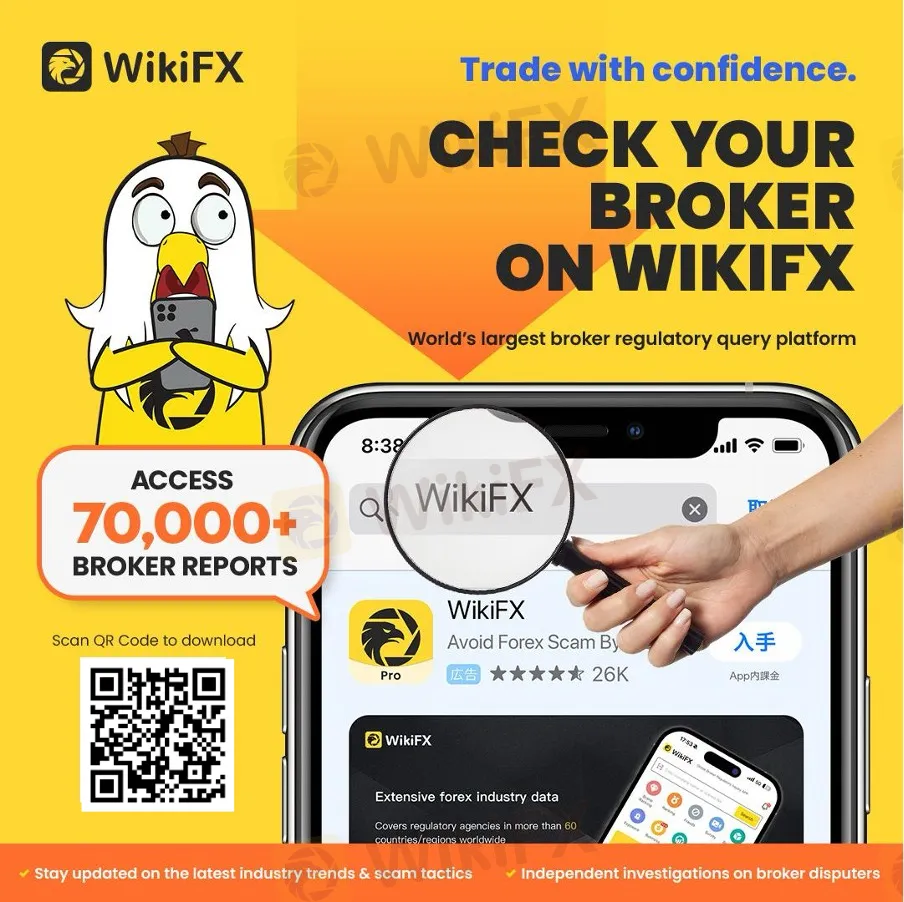Fake Trading Platforms Are Spreading Fast Across Asia | How Investors Are Being Tricked
Abstract:A surge of fake trading platforms is sweeping across Asia, luring investors into polished online traps. But with tools like WikiFX, traders now have a powerful defence against these high-tech financial predators.

A new type of financial fraud is spreading across Asia. Cybercriminals are creating fake investment platforms that look like real cryptocurrency and forex exchanges. These scams are well organised, carefully designed, and powered by modern technology. Their main goal is to steal peoples money while pretending to be legitimate online trading sites.
Recent research shows that these scams are becoming more advanced. Fraudsters attract victims through social media ads, messaging apps, and fake endorsements. The websites they use look professional, complete with real-time charts and trading dashboards. But once investors deposit their money, the funds are quietly stolen and moved through hidden networks.
How the Scams Work
Investigators have developed models that help explain how these scams are set up and how victims are manipulated.
The first model, known as the Victim Manipulation Flow, reveals that scammers often begin by casually engaging targets online. They build trust slowly, often pretending to be successful traders or investment advisers. Victims are encouraged to start with small deposits, which are shown as “profitable” through falsified dashboards. Once trust is secured, the fraudsters push for larger investments, eventually locking victims out once significant amounts have been transferred.
The second model, called the Multi-Actor Fraud Network, outlines how multiple people collaborate within one scam. These networks include data collectors who use leaked personal information to identify potential targets, promoters who pose as credible investors, and payment handlers who manage mule or shell company accounts. Technical teams are responsible for creating and maintaining the fake trading sites, while those at the top coordinate operations and collect profits.
Signs of a Coordinated Global Operation
The analysis shows that many of these fake trading sites share the same technical infrastructure. Some use identical chatbot systems, hosting servers, or digital certificates, suggesting that they are all part of a larger, organised criminal network rather than independent groups.
These platforms are often supported by automated onboarding systems that simulate customer service interactions. Chatbots are used to screen potential investors, collect payment details, and send deposit instructions. While these tools create an illusion of professionalism, they also leave digital traces that can help authorities track stolen funds and connect related cases.
A Borderless Threat
Authorities across Asia are increasingly uncovering the scale of this type of financial crime. In one recent case, 20 suspects were arrested in Vietnam in connection with a billion-dollar cryptocurrency scam. Although separate from other investigations, the case highlights how fraudulent trading schemes now operate beyond national boundaries.
These groups function much like international businesses. They recruit members from different countries, register fake companies, and use mule accounts to transfer money globally without detection. By exploiting weak regulations and gaps between financial systems, they make it difficult for law enforcement agencies to trace or recover stolen assets.
The Need for Stronger Safeguards
Financial experts are calling for tighter monitoring and more coordinated defence measures. Banks and regulators are being urged to strengthen Know Your Customer (KYC) and anti-money laundering (AML) controls to stop fraudulent accounts from being created. Tracking reused digital components, such as domain names, IP addresses, and certificates, can also help identify related scams before they expand.
Investigators also stress the importance of linking technical evidence across cases. Identifying patterns between scam websites allows authorities to expose entire networks, rather than just individual operators. Improved public awareness campaigns are equally vital to help investors recognise warning signs and avoid falling victim in the first place.
How WikiFX Helps Protect Traders
In this environment, platforms like WikiFX play a crucial role in protecting traders. WikiFX is a global broker information platform that checks and rates financial service providers, including forex and investment brokers. The platform gathers data from regulators, licensing authorities, and independent sources to verify whether a broker is legitimate and authorised to operate.

Before investing, users can search for any broker on WikiFX to see whether it holds valid regulatory licences, where it is based, and what other users have experienced. This transparency helps traders spot fake or unlicensed brokers before committing their funds.
WikiFX also publishes industry reports and warnings about risky or unregulated brokers. By keeping traders informed, the platform strengthens market transparency and contributes to a safer trading environment worldwide. Its verification tools and public alerts empower investors to make smarter decisions and reduce the risk of financial loss.
Working Together to Build a Safer Trading Environment
Online trading continues to grow quickly, attracting both genuine investors and criminal groups looking to exploit them. As fraudulent trading platforms become more sophisticated, vigilance and verification are essential.
Preventing these scams requires cooperation between financial institutions, regulators, cybersecurity experts, and investors themselves. Regulators must close loopholes in cross-border monitoring, banks must tighten verification systems, and traders should stay alert to suspicious offers and unrealistic profit promises.
Using tools like WikiFX can make a major difference. By checking a brokers background, reading user reviews, and confirming its licence status, traders can protect their funds before they ever click “deposit.”
In an era when online investments can deliver great opportunities or devastating losses, the key to safety lies in awareness, education, and careful verification. By working together and staying informed, investors and institutions can help stop the spread of these fake trading platforms and restore trust in the growing world of digital finance.

WikiFX Broker
Latest News
Forex24 Faces CySEC Fine for Late Compliance Filing
"Our Business Has Died": Texas Services Sector Sentiment Slumps Further In October
One Wrong Move Wiped Out a Government Retiree’s Lifetime Savings
INTERPOL, AFRIPOL Crack Down on Africa Terror Finance
Forex Scam Checker Philippines: Verify Brokers with WikiFX
MH Markets Review 2025: Trading Platforms, Pros and Cons
Mekness Review: Traders Report Alleged Fund Scams & Account Blocks
Octa FX in Pakistan: The Complete Guide to Local Payments, Regulation, and Support
D Prime to Exit Limassol Office Amid Doo Group Restructure
WikiFX Elites Club Committee Concludes Voting! Inaugural Lineup Officially Announced
Rate Calc

